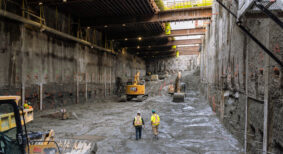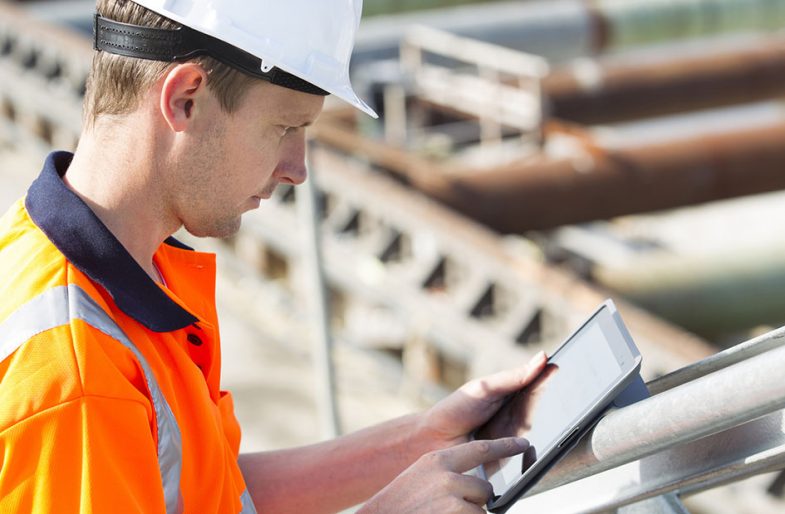Regardless of a company’s specialty, construction site safety is always at the forefront of everyone’s minds. New technologies have made construction site safety easier and more user-friendly, but it takes an agile mind and the willingness to even consider new technology to make it a viable option. Many of these new options get overlooked or ignored simply because they exist outside the realm of the known and familiar.
How can companies use technology to increase safety on their construction sites moving into the future? These concepts give some examples of how construction professionals can start.
Robotics and Automation
Automation is beginning to make an appearance in nearly every industry, from manufacturing to medicine and everything in between. It can also become a valuable tool for improving workplace safety in the construction sector, helping to prevent some of the 31.2 million lost working days that occur every year.
Even without significant investments in new equipment, robotics and automation can be applied to tasks like moving heavy construction equipment and laying brickwork and masonry faster and more efficiently than human employees can manage.
Wearable Technology
Wearable technologies have various applications in numerous industries. This sector was worth more than $23 billion in 2018, and experts predict it will top $54 billion by 2023. Safety and efficiency are the two primary traits supported by wearable technology in the construction industry.
Things like SmartCap can detect employee fatigue levels to prevent sleepy workers from causing accidents. Reactec, a company that specializes in wearables, creates devices that monitor vibration to alert employees when they need to put down their equipment to prevent injuries caused by excessive vibration. These are just a few examples of the potential wearable technology has to improve work site safety in the construction industry.
Smart Personal Protective Equipment
Personal protective equipment (PPE) is a part of daily life in the construction industry. Incorporating technology is the next logical step to make this equipment even more valuable. Between 2016 and 2022, the protective clothing market is expected to grow by 3.6 per cent annually, reaching a total value of $10.2 million. Adding connectivity, networking and sensors makes PPE that much more useful.
Sensors, for example, might be programmed to detect air quality, ultraviolet (UV) radiation, heat levels, ambient temperature or other variables that could negatively impact an employee’s health or safety. Smart visors or safety goggles could transmit information, up to and including augmented reality projections, while serving their other purpose and protecting the wearer’s eyes.
This particular application for digital technologies as a tool to increase workplace safety is still very new, but the possibilities are limited only by the imaginations of engineers and inventors.
Online Databases
Adding networking and connectivity to existing tools and protective equipment will help make the workplace safe. It will also generate massive amounts of information and data — more data than the average human quality control team can sort through in a timely manner. Predictive analytics gives business owners the tools to both sort through that data and turn it into predictions to prevent safety issues from occurring on the job site.
In one example, a top construction company improved job site safety so much that 90 per cent of their work sties completed their tasks with no accidents or incidents resulting in lost time. This is just one example. Energy companies have reduced on-the-job injuries by 67 per cent over a period of 18 months. A manufacturer reduced the number of lost workdays over one year by 97 per cent. The potential return on investment for this application of digital technology is nearly limitless.
4D CAD
Most construction planning is done in a 2D or 3D setting. While this does have some applications for workplace safety, it fails to incorporate one of the most important aspects of job site safety — time. That is where 4D computer-aided design (CAD) comes in. As its name suggests, these programs use all four dimensions to create a safety plan that will comprehensively protect workers on the job site.
One study used a rule-based system to analyze information included in a building design. By including time in the calculations, it became easier to pinpoint both the location and nearly the exact time where and when a problem or injury might occur. The prototype created for this study proved that this sort of application can provide a valuable collaborative tool for anyone involved in a construction project — from the safety officers to designers and project engineers.
Smart Sensors
Sensors are useful for more than just protecting employees from poor air quality or high ambient temperatures. Errors or accidents involving heavy equipment are one of the most common health risks in construction. Incidents like being struck by a piece of equipment and caught in or between machinery are two of the Occupational Safety and Health Administration’s (OSHA) “Fatal Four” — on-the-job incidents that are most likely to cause workplace fatalities.
Smart sensors, specifically proximity sensors, can be incorporated into PPE or equipment and programmed for numerous tasks. The most common application for this particular digital safety tool is in preventing encounters between heavy equipment and pedestrians. A smart sensor can alert both the operator and pedestrian if they’re about to cross paths. Depending on the equipment integration, the sensor can even shut down the engine and pause operation until the offending obstacle gets removed from the path.
Future of Construction Technology
The construction industry is as old as humanity itself, but its mindset and techniques don’t have to stay there. New methods and digital technologies are valuable tools for creating a safe workplace and reducing the number of on-the-job accidents and fatalities.
Digital tools and technology can help effectively reduce the number of incidents that occur every year. It’s up to business owners and project managers to take steps to begin incorporating this new technology on every possible project and jobsite.
Rose Morrison is managing editor of Renovated.









